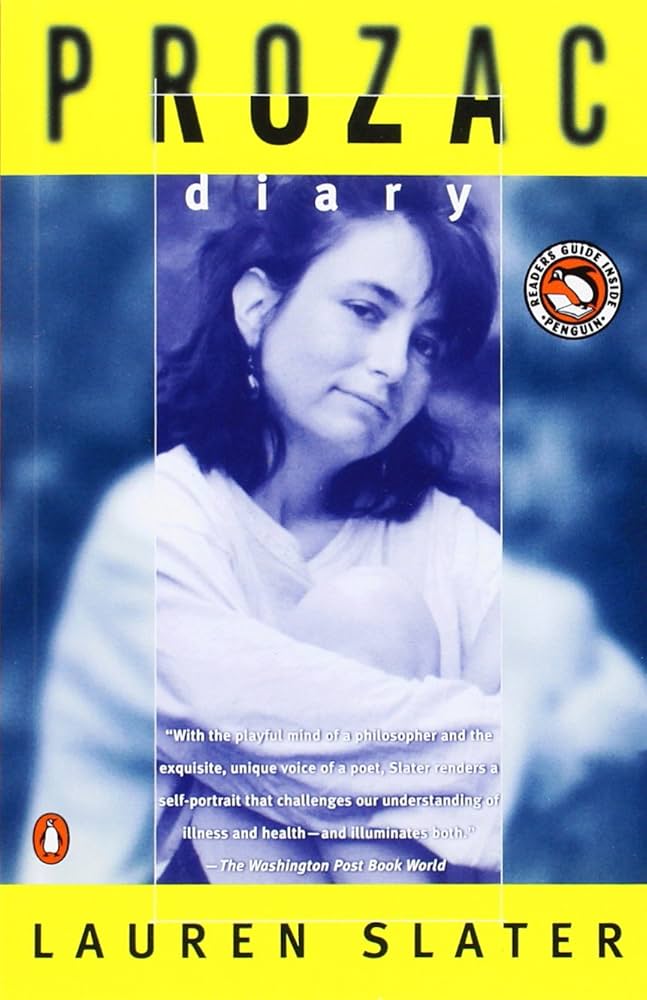A new study published in Medical Humanities examines how memoir and metaphor reshape ideas of recovery in psychiatry. Researchers Swikriti Sanyal and Hemechandran Karah of the Indian Institute of Technology Madras analyze Prozac Diary, Lauren Slater’s 1998 memoir, to explore how figurative language challenges the psychiatric discourse on mental illness, medication, and normalcy.
By framing her experience with Prozac through metaphor, Slater resists the idea that recovery is simply a biomedical process. Instead, her memoir presents recovery as an active, rhetorical process—one that allows individuals to reclaim their experiences from psychiatric definitions of illness and health.
Prozac Diary introduces complexity and nuance to Slater’s relationship with Prozac, challenging the popular 90s narrative that the antidepressant “cures the chemical imbalances” of the brain in those with mental illness.
“By unraveling the intrapersonal, socio-cultural, and discursive ramifications of recovery, as opposed to psychiatry’s perfunctory understanding of biological cure as a restoration of a socially desirable state of ‘normalcy,’ she is able to reclaim the lived experience of recovery,” the authors write.
“We argue that in Prozac Diary, recovery does not merely imply a passive internalization of psychiatry’s biological determinism and its psychopharmaceutical approaches. Instead, it is a rhetorical process that enables the medicalized individuals to actively engage with the mental health system and interrogate the possibility of critically responding to its normative frameworks as agentic subjects.”
At the heart of the study is a critical interrogation of what it means to “recover”—and who gets to define it. Psychiatry has historically positioned recovery as a return to a pre-determined, functional state, often framed within a neoliberal logic of productivity and social conformity. In contrast, disability rights activists and service-user movements have long emphasized recovery as a process of self-determination, one that does not necessarily align with mainstream ideas of normalcy. Slater’s memoir, as Sanyal and Karah argue, resists the psychiatric model’s passive, compliance-driven version of recovery by engaging in an active, rhetorical redefinition of selfhood.
















If story telling is an act of resistance then I’ll just commit suicide now. Because the truth should prevail, not my story which is your own socially conditioned hotchpotch of contradictory and idiosyncratic ideas of what you are, all totally deluded. This is the truth people! Imagine what a super-sane psychotic like me makes of you lot. If I were to adopt you as pets I’d DEFINITELY let you be outdoor pets. How’s about it? You can come in for snuggles anytime.
Report comment
Oops – I’m turning back into that multicoloured demonic spider. I’ve got every vibration of spiritual energy operating through me – some of them human dead and alive, some of them damned and cowering, some of them demonic and devious, some of them animalistic and explosive, some of them explosively creative, some of them emotional and intuitive, some of them sexual and the very essence of naugtiness, some of them passionately concerned with the true and the good, some of them compassionate and self-negating, some of them veiled and unyielding, some of them quiet and meditative, some of them psychic and revalative, many of them shooting in through the mental and astral and psychic worlds. We’re like so many rays of light in human form isn’t it. There’s also the sea of Earth energies in conflict with each other. No wonder the body needs to drink and shout. But where is the body? I mean, where is it actually? I’m not talking geography: I’m not talking space and time, all these perverse inside out concepts. I’m talking about where is the ACTUAL body that you see? You say in consciousness or awareness: what is that? Where is that? So that thing is watching over medusa and trying to tame her snakes. And then she’ll graduate to being mad as a box of frogs and then to be the many armed Kali. Perhaps I ought to have a green tea so I turn back from a spider into a tree. Or we could all have some DMT tea and then explode into infinity.
Report comment
Geez, aren’t there already books on how psychiatry is based on nothing BUT language???
Report comment
Haha! I think there is, but unfortunately it’s all in language too. No, seriously good point there. It’s all conceptual assumption and construction, nothing but words. The words refer to data sometimes but nonetheless it’s all words, you don’t need insight as a psychiatrist – just to learn these damn words!
Report comment
If it weren’t for all their biologically fictitious labels in their spectacularly boobish DSM there’d be no psychiatry.
Report comment
CLARIFICATION: There’d be no “psychiatry” if it weren’t for all their biologically fictitious labels IN THEIR SPECTACULARLY BOOBISH “DSM”.
Report comment